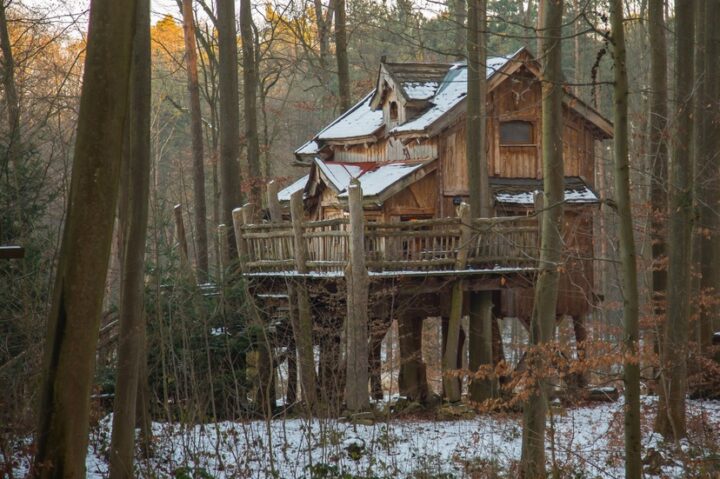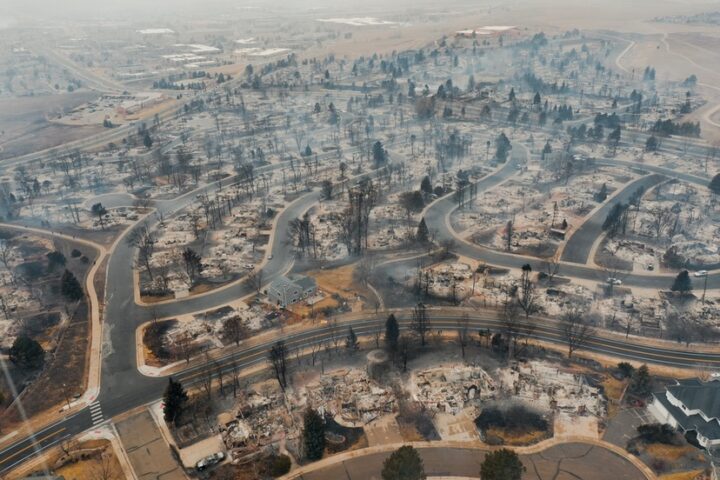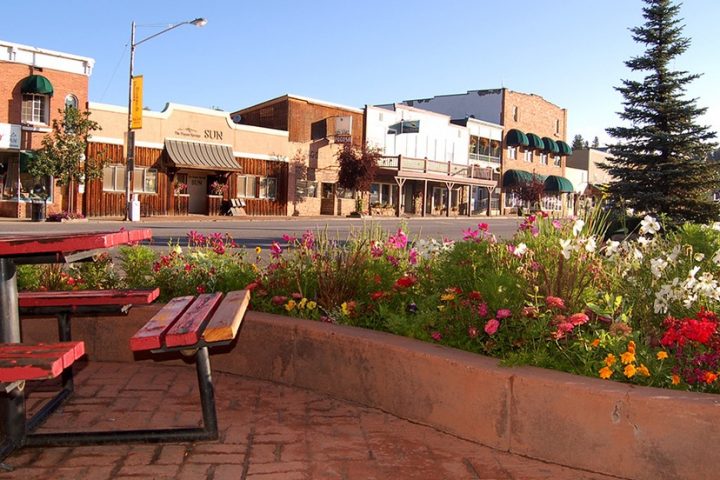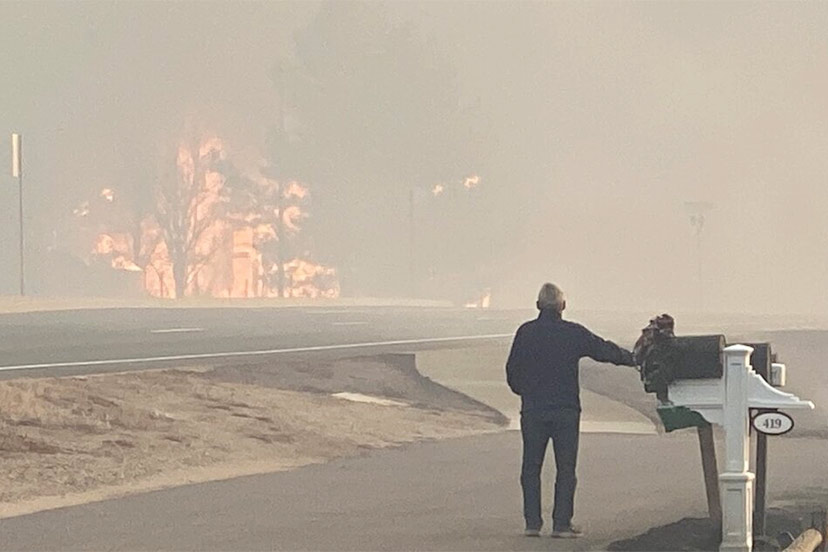But one or two insurance companies have stopped renewing policies for wood structures like townhomes that are in wildfire risk areas, Ito said Monday, in part because the companies have seen their own insurance costs climb…
— from InsuranceJournal.com, May 1, 2024
I found a picture of a cool house, in the midst of a beautiful forest.
The house, and the surrounding deck, appear to be supported by tree trunks growing out of the ground.
A wooden house, in a wooded forest. Very cool.
Once upon a time, this was romantic.

Ten years ago, the owners of this house probably could have afforded property insurance. This year, I suspect they would be lucky to find any kind of insurance, at any price.
A wildfire swept through the Hawaiian town of Lahaina in August last year, causing an estimated $6 billion in damage. So far, insurance companies have reportedly paid out about $3 billion in claims; more than 2,000 displaced residents are living in hotels, and rebuilding hasn’t started yet. The town’s former tourism industry has ceased to exist.
Lahaina had been a major Hawaii destination, and one estimate projects a loss of revenue to the state’s tourism industry — from just this one fire — at 10% to 15%.
In 2021, the Marshall Fire destroyed 1,100 homes in Boulder County, Colorado, causing an estimated $2 billion in damage.
From the May, 2024, InsuranceJournal,com article by Rebecca Boone, linked above:
Last year, Colorado lawmakers authorized the creation of the Fair Access to Insurance Requirements (FAIR) Plan, which is expected to provide bare-bones property insurance coverage for residents who can’t get insurance from a private company, starting in 2025. Other states like California, Louisiana and Florida have also resorted to providing their own state-affiliated “insurers of last resort,” which can fill in the gap when when the private insurance market abandons an area because of natural disaster risk.
Something I didn’t know until found the InsuranceJournal.com article. There are companies that provide insurance to insurance companies, called “reinsurance” companies. In exchange for a cut of the premium payments, the “reinsurance” company agrees to cover unexpectedly large losses. In essence, this allows your insurance company to sell more policies than they actually have the ability to cover.
But those “reinsurance” rates are climbing, and some insurance companies are reevaluating the policies they are willing to issue to homeowners and businesses.
This is a problem, for a community like Pagosa Springs, surrounded by a national forest that experiences regular instances of lightning-cause wildfire.
The forest is half the problem.
The other half of the problem is that people living next to — and in some cases within — the forest, have built their homes out of wood.
The problem of wood homes became very apparent in 2021, when the Marshall Fire swept through Boulder County subdivisions during a high-wind event. Most of the destroyed homes were not surrounded by forest. They were surrounded by other wooden houses.

This Boulder County neighborhood, shown above, would presumably look very different today, if the homes had been built with bricks. Or concrete blocks. Or some other fire-resistant material…
But we love our wooden houses.
In many places around the world, entire cities have been built from brick and stone. Wood was not a common building material for much of human history, except for perhaps the pioneer log cabin here and there.
Colorado, meanwhile, presented abundant opportunity to build with lumber. Here in Archuleta County, tall, straight, Ponderosa pines supplied the material for the pioneer town of Pagosa Springs, back in the 1880s. But fires swept through the downtown district — at least twice, as I recall — and finally, the property owners began to use brick and concrete for their buildings, and as a result, our downtown commercial buildings — so close to one another that they share adjoining walls — are still standing in 2024.

Driving around the Pagosa subdivisions, I see new homes being built… out of wood. These homes are being built, in many cases, with money borrowed from a bank or mortgage lender, and the bank or mortgage lender naturally demands property insurance, to cover their investment.
The bank or mortgage lender is not willing to pay for the insurance themselves. That would be silly! So the homeowner becomes responsible for buying sufficient insurance to protect the bank.
From a May 13 article b in The New York Times:
In Colorado, homeowners insurance was unprofitable [to insurance companies] in eight of the past 11 years, more than any other state. Colorado is setting up a high-risk pool in anticipation of more residents losing insurance…
A shaky insurance market threatens the entire economy. Without insurance, banks won’t issue a mortgage; without a mortgage, most people can’t buy a home. With fewer buyers, real estate values are likely to decline, along with property tax revenues, leaving communities with less money for schools, police and other basic services…
I imagine the insurance problem will get worse. Already, I am hearing that certain insurance companies have stopped writing policies in Archuleta County, for wooden homes built adjacent to flammable forests.
From an article by reporter Jaclyn Allen on Denver7.com:
A March 2023 study conducted for the state’s Division of Insurance found that between January 2019 and October 2022, the average homeowner premium was up nearly 52%.
“Unfortunately, Colorado is in this perfect storm of escalating catastrophes,” said Carole Walker, executive director of the Rocky Mountain Insurance Information Association…
“We are very much at a tipping point where insurance companies are having to weigh their risk and how much risk they are able to take on to be able to protect their current policyholders,” Walker said. “Everyone is likely seeing some sort of premium increase, and depending on their risk, it may be more challenging to find what for them is affordable insurance.”
Part of the increase in homeowner premiums is coming from increased property values, resulting from a hot Colorado real estate market. Those higher property values have also brought increased property taxes. As if things weren’t bad enough…
So then, higher insurance rates stacked on top of higher replacement costs.
Solutions, anyone?

